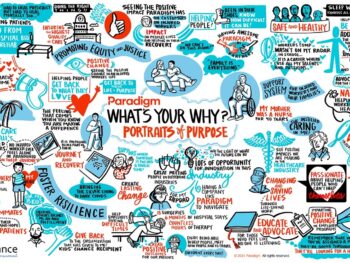Pain, real or perceived, is a key barrier and among the most difficult of workers compensation claims to resolve. Pain can originate from the injury or from surgical intervention/treatment. Pain management is used to treat conservatively an injury or can be a part of the post-surgery rehabilitation process.
The numerous treatment techniques, methods, and approaches are divided into three broad areas.
- Non-drug, noninvasive pain management.
- Noninvasive drug management.
- Invasive pain management. (WCxKit)
- Non-drug, noninvasive pain management
Common non-drug, noninvasive pain management techniques include:
- Physical therapy to assist the employee in restoring normal movement of an injured body part.
- Cutaneous stimulation – the use of hot packs and cold packs to heat or cool the skin and underlying tissue.
- Treatment modalities of hydrotherapy, ultrasound, neurofeedback and electrical stimulation.
- Exercise including stretching, flexion, walking, weight lifting (appropriate to the nature of the injury), and aerobic routines. These exercises may be active, passive, or resistive depending on the nature of the injury and associated pain.
- Electrotherapy – the most common form of electrotherapy is transcutaneous electrical nerve stimulation (TENS) used to reduce back pain by using low voltage electric stimulation on the sensory nerve system. (TENS is effective in some cases and ineffective in others.)
- Chiropractic manipulation of the affected areas — sometimes beneficial.
- Cognitive therapy includes teaching the employee coping and relaxation techniques.
- Noninvasive drug management
Both prescription and non-prescription medications are used by medical providers to control and eliminate pain. Several types of noninvasive pain drugs are:
- Aspirin, naproxen, ibuprofen, and COX-2 inhibitors, all nonsteroidal, anti-inflammatory agents (NSAIDs).
- Acetaminophen.
- Anticonvulsants and antidepressants used for “nerve” pain.
- Muscle relaxants used to reduce muscle spasms due to pain.
- Narcotics — including opium, morphine, and heroin.These powerful drugs relieve pain but may entail the risk of addiction if not medically supervised properly.
- Invasive Pain Management
The use of needles and surgical insertion to control pain is normally referred to as invasive pain management, one of the most expensive approaches to pain control. Several techniques for invasive pain management are:
- Epidural steroid injections (effective for providing temporary pain relief in severe cases).
- Facet joint injections (also effective in severe cases).
- Surgically implanted spinal cord stimulators and peripheral nerve stimulators (not always effective).
- Lumbar sympathetic blockage.
- Stellate ganglion blockage.
- Implantable opioid infusion pump to deliver an opioid agent direct to the affected nerve(s).
- Pain Management Providers
If the medical provider wants to refer an injured employee to a pain management clinic, review the clinic’s website. If they specialize only in invasive pain management techniques, have your nurse case manager consult with the medical provider on the possibility of referring the employee to a pain management clinic that considers all three approaches to pain management, not just the pain control methods that earn the most money for the pain management clinic. There are generally 2 types of physicians that provide “pain management” services– anesthesiologists and physiatrists (physiatrists are called “PMR docs” which stands for ‘physical medicine and rehabilitation’). The first tend to go straight to invasive techniques, while PMRs will often start with less-invasive techniques and work their way up.
Donald H. Marks, MD, PhD, a principal in Cognitive Engineering, LLC, mentioned that he has found in the past that validating objectively claims of pain is difficult. For the last several years he has adapted functional MRI scans which can actually show, illustrate, demonstrate the pain and cognitive impairment.
Summary
As with other treatment options, pain management starts with the least invasive and less costly methods and steps up to more invasive and costly techniques to relieve the injured employee’s pain. It is very important to monitor progress to discover the best method achieving relief and to avoid a narcotic addiction for the patient.
Author Rebecca Shafer, JD, President of Amaxx Risks Solutions, Inc. is a national expert in the field of workers compensation. She is a writer, speaker, and website publisher. Her expertise is working with employers to reduce workers compensation costs, and her clients include airlines, healthcare, printing/publishing, pharmaceuticals, retail, hospitality, and manufacturing. See www.LowerWC.com for more information. Contact: RShafer@ReduceYourWorkersComp.com.
Our WC Manual: http://corner.advisen.com/partners_wctoolkit_book.html
WORK COMP CALCULATOR: http://www.LowerWC.com/calculator.php
MODIFIED DUTY CALCULATOR: http://www.LowerWC.com/transitional-duty-cost-calculator.php
WC GROUP: http://www.linkedin.com/groups?homeNewMember=&gid=1922050/
SUBSCRIBE: Workers Comp Resource Center Newsletter
Do not use this information without independent verification. All state laws vary. You should consult with your insurance broker or agent about workers comp issues.
©2011 Amaxx Risk Solutions, Inc. All rights reserved under International Copyright Law. If you would like permission to reprint this material, contact Info@ReduceYourWorkersComp.com.














